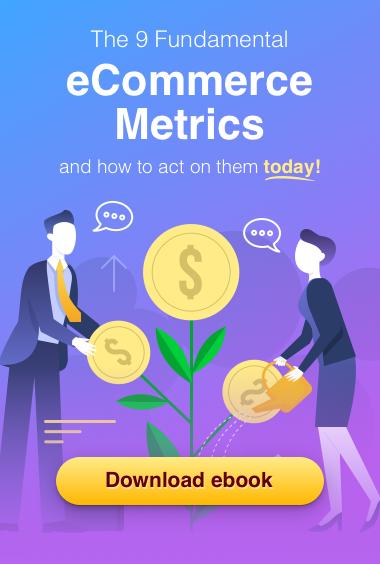eCommerce terms starting with C
Cohort analysisPopular— Cohort analysis tracks and analyzes the behavior of a customer cohort over time. It is an important part of retention analysis where you see how different customer groups behave and how their loyalty progresses. Cohort analysis usually is displayed
— CRM or a customer relationship management system is a data processing tool that tracks and makes customer data usable for outreach, engagement, and relationship building. A CRM enables ongoing connection with the customer, tracking their customer journey a
— Customer retention is the process of engaging customers continuously and stimulating repeat orders. Customer retention marketing uses data to personalize and guide the customer journey, build a deeper relationship with the customer, and win their loyalty a
— Canceled orders rate as a percentage of all orders is an ecommerce metric to keep track of. A small percentage is normal, of course. But too many cancelations can mean your products have a bad reputation that shows up when people dig deeper online; or that
— Cash flow in ecommerce is the availability of cash in the business at any given time. A positive cash flow means you have the money to pay expenses now, while a negative cash flow means you have to wait for some revenue to come in before you can pay suppli
— Complementary products are related products that are often used together and that’s why it makes sense to sell them along with each other. Examples for complementary products would be: coffee beans and coffee filters, shoes and shoe cleaning products
— Content drip is a type of an email campaign, consisting of a series of emails with blog articles and other content in them. It’s the closest thing ecommerce brands can do to an informational newsletter. The purpose of the content drip campaign is to
— Cost of goods sold or cost of sales is the accounting term for the price companies pay for manufacturing their products - materials, labors, factory costs, etc. If you resell products, the cost is what you pay to your suppliers for them plus storage, shipp
— Coupons or coupon codes are the key, the password to a discount. By applying a coupon, the customer unlocks a certain discount. When you advertise a -50%, for example, you give people a 50OFFNOW code to redeem in order to get the discount. Different
— Customer acquisition is part of the customer lifecycle and a focus for ecommerce marketing. It is the process of converting customers for the first time after they already know about your company and brand. It can be free - through organic search or socia
— Customer acquisition cost (CAC) is the marketing cost you pay to gain a new customer. In ecommerce, usually the first order incurs a loss because most brands rely greatly on ads and influencer campaigns for customer acquisition. Generally, if CAC is
— Customer cohort is a group of customers who share something in common - in ecommerce, it’s usually the product, campaign, coupon or source of their first order. Such segmentation is useful to monitor how these factors impact the shopping behavior and
— Customer database is an organized record of all your customer data - contact details, orders, communication, activity on site, etc. It automatically tracks and processes customer behavior to make it actionable for marketing. In a customer database, you can
— Customer engagement is the long-term communication between customer and brand. For companies, it means brand awareness and continued interest, returning customers and loyalty. Engaging customers is a way to be remembered between orders and to get noticed b
— The customer journey is the experience of the customer from the first to the last touch with a brand. It is about things they do, how they experience the communication with your brand and it’s often out of your control - some would go to your offline
— The customer lifecycle is how a person progresses through different statuses in relation to a brand. Roughly these statuses can be being in the target audience, being a prospect/ lead, becoming a customer, becoming a loyal customer, and brand advocate. Th
— Customer lifetime is the entire period between first and last purchase of one client. It is how long they stay a customer. Depending on the products, customer lifetime can be very long or very short. An online grocery store can serve people througho
— Customer lifetime value is the total revenue earned from a single customer over their entire time as a customer. It can be tracked as it happens, if you have ecommerce analytics tracking in place: CLTV = Order 1 + Order 2 + Order 3 …&h
— Customer loyalty is the phenomenon of customers coming back to your store to shop repeatedly. It is due to satisfaction with the products and service, plus a feeling of belonging - they identify with your brand values and the lifestyle the products offer.
— A customer segment is a group of customers with similar behaviors or characteristics that you filter for marketing purposes. The idea is to engage the different segments in a more relevant, tailored way for maximum results. Some customer segments most eco



